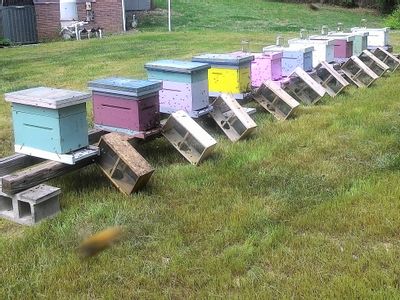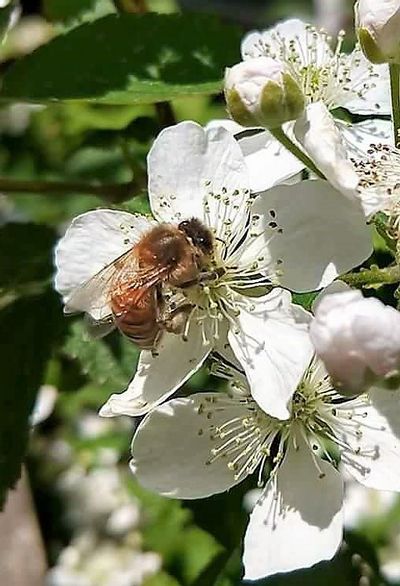Our Apiaries

A beekeeper, or "apiarist" is a person dedicated to a 10,000 year old art form of housing of bees to produce honey, wax, propolis, pollen and royal jelly. As apiarists we work with the bees side by side to produce products while maintaining a safe and healthy environment for these hard workers.
We have numerous hives located in various yards in the area. These out-yards support local farmers and gardeners while also providing ample resources for our bees.
While a healthy hive of about 55,000 bees can produce up to 100 pounds of honey, they only need about 35 pounds to live on through the winter.
That means we can share this wonderful bounty through careful tending and handling of these hard working friends.
Bee & Honey Facts

Much like the art of the apiarist, the bees also learn their craft!
The first three weeks of a bee is spent working in the hive. Called house bees, they do certain jobs like clean the cells, feed larvae, build wax comb, store food, and defend the hive. Each house bee goes through all the jobs predetermined according to their age.
The house bee becomes a field bee during the last three weeks of her life. A field bee leaves the hive in summer to search through fields and gardens for flowers. She makes about ten trips a day, about an hour for each trip, gathering nectar, pollen, water and bee glue for the colony.
Amazing facts:
*The average worker bee lives only six weeks and makes about 1/12 of a teaspoon of honey in its entire lifetime.
*One field bee can visit 10 flowers a minute, and may visit 6 hundred in one trip.
*In order to produce one pound of raw honey, about 2 million flowers must be visited.
*A hive of bees must fly 55,000 miles to produce a pound of honey.
One bee colony can produce 60 to 100 pounds of honey per year.